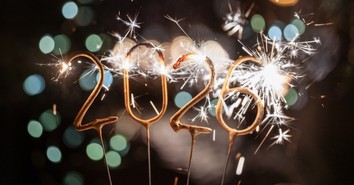Best of Two Eras Created by The Artist

DVD Release Date: June 26, 2012
Theatrical Release Date: November 23, 2011 (limited); December 23, 2011 (wider)
Rating: PG-13 (for a disturbing image and a crude gesture)
Genre: Drama/Silent Film
Run Time: 100 min.
Director: Michel Hazanavicius
Cast: Jean Dujardin, Bérénice Bejo, John Goodman, James Cromwell, Penelope Ann Miller, Malcolm McDowell
Imagine if someone made a movie the way they used to make movies way back when, but knowing what we know now. Well, someone has.
The Artist—a full-length black-and-white silent film (yes, silent)—is the best of two eras a century removed. It’s a quixotic elegy to the dawn of moviemaking told in the language of classic cinema but with contemporary erudition, and the result is timeless. As movies go it’s a not-so-little miracle, a very welcome gift, and must be seen in a theater. It’s a movie to fall in love with.
Remember the bold guarantees declared in previews and trailers from those early days? “You’ll laugh! You’ll cry! You’ll thrill! You’ll swoon!” Well, with The Artist, you will laugh. You will cry. You will thrill, swoon, cheer, and completely fall under its spell.
Shot on Hollywood soundstages, French filmmaker Michel Hazanavicius takes out sound, color, special effects, and even removes widescreen dimensions. In their place, he pours heart and soul into a monochromatic square-framed music-only silent picture that not only defies convention but modernity itself.
Enhancing this cinematic love affair even more is the smart choice to make it a movie about the movies. Film history buffs will be most strongly (though not exclusively) drawn to the material, so why not make it about film history at its core, in shamelessly romanticized fashion? That’s exactly what Hazanavicius does, demonstrating why movies are such a vital part of our human and cultural fabric.
It’s 1927, and George Valentin (Jean Dujardin) is a marquee star of the Silent Era, true Hollywood royalty. But he’s the star of an industry on the verge of collapse, along with the impending stock market crash and, sadly, Valentin’s own personal life.
While the prospects of the industry reinventing itself are good (even assured), the same hopes cannot be said of Valentin’s marriage, one in which deterioration has been masked by fame and success. When forced to find his voice both professionally and personally, Valentin must confront the hard truth that he hasn’t developed one for either.
As Valentin declines with the Silent Era, young ingénue Peppy Miller (Bérénice Bejo) ascends with the talkies. Yet despite the soul attraction that was sparked between the two while filming Valentin’s last big picture (in a charming sequence of takes from a dance scene), he and Miller are on different trajectories, star-crossed, two hearts that yearn for port as they pass in the professional night. It is a journey filled with the gamut of emotions: joy, happiness, struggle, confusion, fear, missed opportunities and regret, all told with deeply-felt pathos.
From the opening frame, The Artist captures the pre-sound era in every aesthetic detail: art deco credit titles, bold swelling orchestral bombast (that also accents action like sound effects), and a larger-than-life acting technique that embodies humor and humanity. Throughout there are nice bits of optical invention, too, not just comedic but also romantic and dramatic. (An early moment where Peppy brings an empty tux to life isn’t just Chaplinesque, it’s quietly breathtaking).
Yes, it's broad in many ways, but then subtle and sophisticated at crucial moments, trusting subtext over expression or action. Hazanavicius and his cast communicate narrative and emotional depth with a visual efficiency that is truly rare. Yes, words can be powerful, but a sequence or single shot can be even more so. Not only is dialogue not missed here but, with formidable simplicity, The Artist shows just how laborious words often are and how good silent film can be.
The mixture of old and new cinematic sensibilities is impressively seamless. Editing is simple but with a modern sense of pacing, and an approach that considers character as much as action and narrative. Cinematography may not be sweeping but it is artfully framed. Performances are big, even mugging at times, but then pulled back, internalized, and authenticated. Film references—from homages to Citizen Kane to a direct music cue from Vertigo, to name two—abound and enrich. The whole package is like film education through exhilaration.
What elevates this above being just a well-rendered stunt are the two charismatic and poignant performances by Dujardin and Bejo. With a twinkle in his eye and glint on the teeth, Dujarden sports the best attributes of old Hollywood’s biggest stars—a genetic concoction of Errol Flynn, Fred Astaire, and (most especially) Gene Kelly. Bejo is striking as well—vivacious, strong, yet vulnerable. Individually, she and Dujardin are classically stylized and effectively nuanced. Together, they absolutely beam. More notable actors like John Goodman and James Cromwell excel in small but crucial roles as well.
This is a glorious achievement, for both its artistry and complex hard-earned uplift. Bring a date. Hold hands—tightly at times, by emotional necessity. It isn’t merely one of the best films of the year but, broader still, one of the best silent films ever made and ranks with greats like Sunrise, City Lights, All Quiet on the Western Front and others.
The Artist is meant to be seen on the big screen to be fully appreciated, not due to any state-of-the-art spectacle but because the theater becomes a time machine, transporting you back to a bygone age. Fitting, too, that it’s the type of movie that lifted spirits during The Great Depression and will now do the same in our Great Recession. It’s perfect, and there hasn’t been anything like it for nearly 100 years.
CAUTIONS:
- Drugs/Alcohol Content: Alcoholic drinks are consumed casually, no drunkenness.
- Language/Profanity: A “middle finger” gesture.
- Sexual Themes: Themes of marital troubles. An unconsummated attraction between a married man and another woman. Kissing.
- Violence: A suicide attempt using a gun.
Originally published January 03, 2012.







